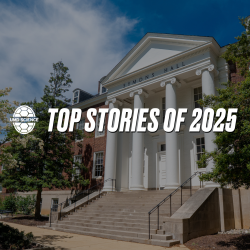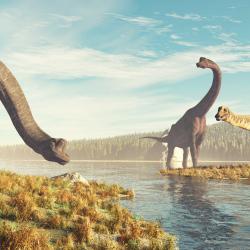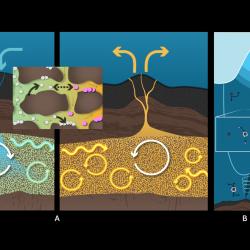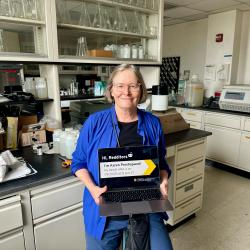Researchers Solve One of Earth’s Ancient Volcanic Mysteries
A new study traces a 120-million-year-old “super-eruption” to its source, offering new insights into Earth’s complex geological history.

Geologists led by the University of Maryland and the University of Hawaiʻi finally connected the dots between one of the largest volcanic eruptions in Earth’s history and its source deep beneath the Pacific Ocean.
In a paper published in the journal Nature on April 30, 2025 the team revealed that the same underwater hotspot created both a chain of underwater volcanoes in the southern Pacific region and the massive Ontong-Java Plateau, the largest volcanic platform on Earth.
“Up until now, we’ve had this extremely disconnected picture of the Pacific and its volcanoes,” said the study’s corresponding author Val Finlayson, an assistant research scientist in UMD’s Department of Geology. “But for the first time, we’re able to make a clear connection between the younger southern and older western Pacific volcanic systems. It’s a discovery that gives us a more complete history of how the Pacific Ocean basin has evolved over millions of years to become what it is today.”
For years, scientists wondered whether the southern Pacific Ocean’s Louisville hotspot—an area where hot and chemically distinct material from deep inside the Earth rises to the surface to create volcanoes—formed both the underwater mountain chain bearing its name and the 120-million-year-old Ontong-Java Plateau, a submerged seafloor platform located what is now north of the Solomon Islands. Previous theories and models on how the Pacific seafloor moved attempted to explain the connection between the two major geological features but failed to provide a definitive answer.
“Much of the physical evidence for a connection between Louisville and Ontong-Java has disappeared because part of the Louisville hotspot track was subducted, or pushed, under tectonic plates in the Pacific region,” Finlayson said. “We had to sample deeply submerged volcanoes from a different long-lived hotspot track to find evidence from tens of millions of years ago that suggested our models for the Pacific plate needed revision.”

Finlayson and her team made their first breakthrough when they discovered a series of underwater mountains near Samoa that were much older than expected for volcanoes in the area. By analyzing the age and chemical makeup of ancient rock samples taken from the area, the researchers concluded that these mountains were part of a much older segment of the Louisville volcanic track, which Finlayson compared to a volcano’s “footprints.” As the Earth’s crust (tectonic plates) moves over hotspots, they form these volcanic tracks.
“We can track these ‘footprints’ across time and space,” Finlayson explained. “The footprints get progressively older as you move away from an active hot spot, similar to how your own footprints will fade away in the sand as you walk. But you can still tell that these prints belong to the same source. Thanks to this new evidence, we were able to revise current models of Pacific plate motion and gain a better understanding of how the seafloor has moved over millions of years.”
Finlayson’s team now plans to apply their improved models to better understand other ancient volcanic features scattered across the ocean floor and above its surface. As many Pacific island nations currently sit atop volcanic platforms and underwater volcanic chains, Finlayson hopes that her work furthers understanding of the very foundations of those countries. She also believes that her team’s discovery will help scientists develop a better understanding of volcanism and geological evolution, not just in the Pacific region, but around the world.
“We’ve solved one mystery, but there are countless more waiting to be unraveled. This finding offers us a more accurate history of the Pacific and its volcanic activity and helps us understand more about the dynamics and style of volcanism that occurs there,” Finlayson said. “Everything new we learn about the Earth’s tumultuous past helps us better understand the dynamic planet we live on today.”
###
The paper, “Pacific hotspots reveal a Louisville-Ontong-Java Nui tectonic link,” was published in Nature on April 25, 2025.
In addition to researchers from the UMD and the University of Hawaiʻi, co-authors include researchers from Oregon State University, University of South Carolina, University of California Santa Barbara and Brown University.
This work was supported by the National Oceanic and Atmospheric Administration and the U.S. National Science Foundation (Projects 1912934, 1912931 and 1912932; Grant No. 1560196). This story does not necessarily reflect the views of these organizations.







